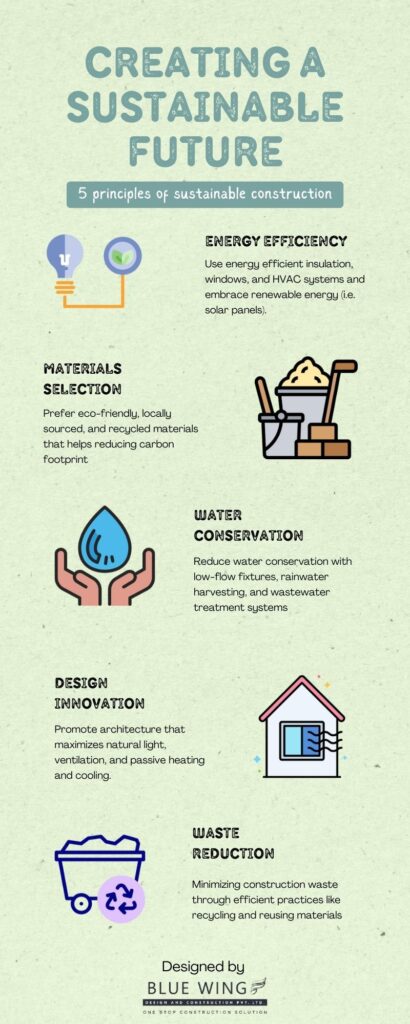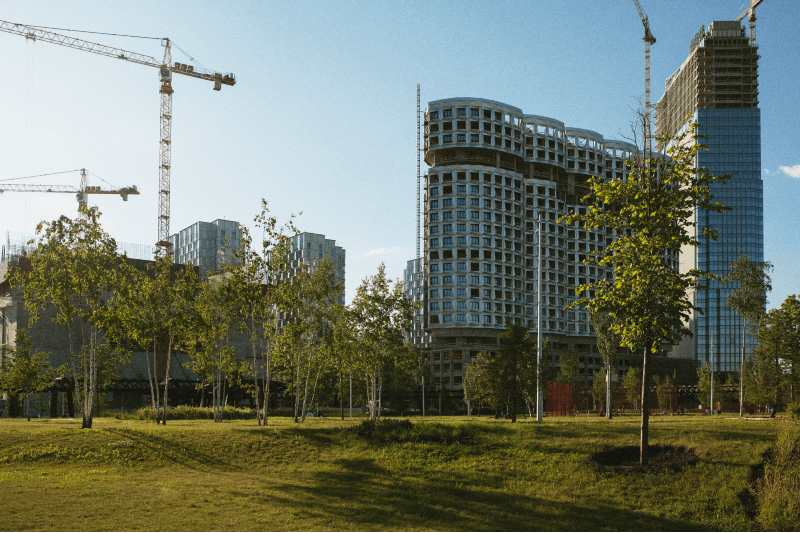In a world where environmental concerns are at the forefront of global discussions, the construction industry is no exception to the call for sustainability. As urbanization continues to accelerate, it is crucial to rethink how we build our homes, offices, and infrastructure. This is where the concept of sustainable construction steps in, promising not only environmentally friendly practices but also economic and social benefits. In this blog, we will explore the fascinating world of sustainable construction, its principles, and its significance in shaping a more responsible and resilient future.
The Foundations of Sustainable Construction
Sustainable construction, also known as green building or eco-friendly construction, is an approach that focuses on reducing the environmental impact of buildings while enhancing their performance, comfort, and longevity. At its core, sustainable construction seeks to strike a balance between meeting the present needs without compromising the ability of future generations to meet their own needs.
Here are some key principles that underpin sustainable construction:

1. Energy Efficiency: A cornerstone of sustainable construction is the reduction of energy consumption in buildings. This involves using efficient insulation, windows, and HVAC systems to minimize heating and cooling requirements. Renewable energy sources like solar panels are also often integrated into the design.
2. Materials Selection: Sustainable construction prioritizes the use of eco-friendly, locally sourced, and recycled materials. This not only reduces the carbon footprint but also supports local economies and reduces waste.
3. Water Conservation: Incorporating water-saving technologies such as low-flow fixtures, rainwater harvesting, and wastewater treatment systems helps reduce water consumption.
4. Design Innovation: Thoughtful architectural and engineering design can maximize natural light, ventilation, and passive heating and cooling, reducing the need for artificial lighting and climate control.
5. Waste Reduction: Minimizing construction waste through efficient practices like recycling and reusing materials helps lessen the environmental impact of construction projects.
The Benefits of Sustainable Construction
Environmental Conservation: Perhaps the most obvious benefit of sustainable construction is its positive impact on the environment. Reduced energy consumption, lower greenhouse gas emissions, and decreased resource depletion contribute to a healthier planet.
Cost Savings: While initial construction costs for sustainable buildings may be slightly higher, the long-term savings are significant. Energy-efficient features lead to lower utility bills, and durable materials require less maintenance over time.
Enhanced Comfort: Sustainable buildings are often designed with occupant comfort in mind. Natural lighting, improved indoor air quality, and temperature control result in more pleasant living and working spaces.
Market Value: Sustainable buildings tend to have higher market values and can command premium rents or sale prices. Many tenants and buyers are willing to pay more for environmentally friendly spaces.
Regulatory Compliance: As governments worldwide tighten regulations related to energy efficiency and environmental impact, sustainable construction practices can help companies stay compliant with current and future laws.
The Role of Technology in Sustainable Construction
Modern technology plays a pivotal role in advancing sustainable construction practices. Building information modeling (BIM) software enables architects and engineers to create highly efficient designs and simulate their performance. Additionally, the Internet of Things (IoT) allows for real-time monitoring and control of building systems, optimizing energy use and reducing waste.
Conclusion
In an era where climate change and resource depletion are pressing concerns, sustainable construction offers a path toward a more responsible and resilient future. It combines innovative design, eco-friendly materials, and advanced technologies to create buildings that not only reduce their environmental impact but also provide economic and social benefits.
As we move forward, the construction industry’s commitment to sustainable practices will be instrumental in creating a world where our buildings not only shelter us but also protect the planet for generations to come. Sustainable construction is not just a choice; it is a necessity.
By embracing sustainable construction, we are building not just structures, but a sustainable future—one brick, one beam, and one eco-friendly decision at a time. The time has come to turn our blueprints into greenprints, and in doing so, we construct a better tomorrow for all.
